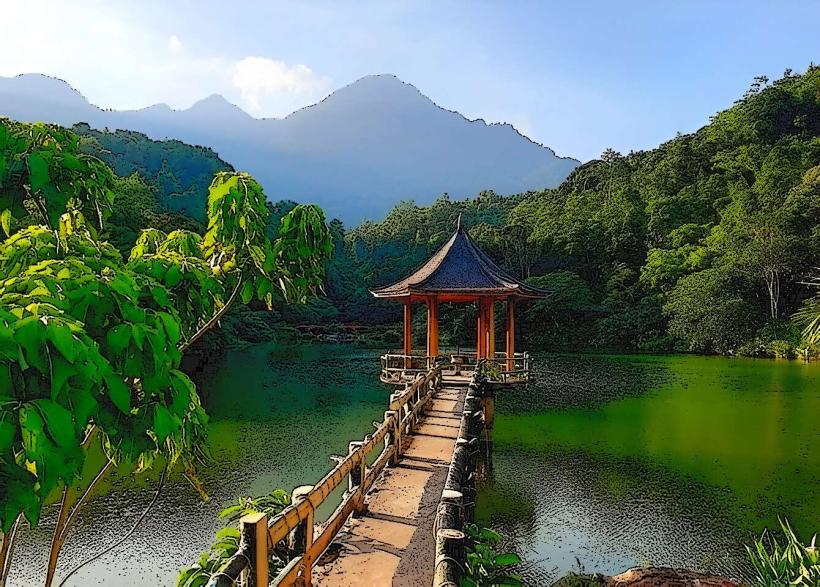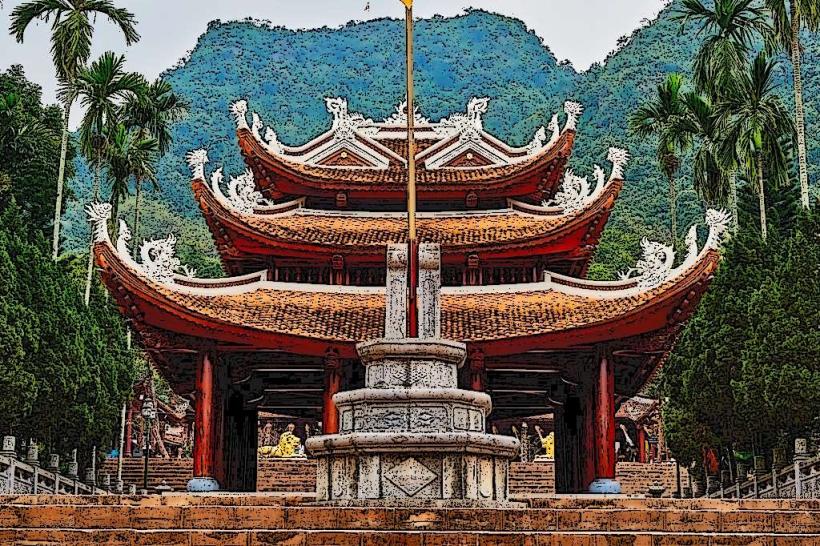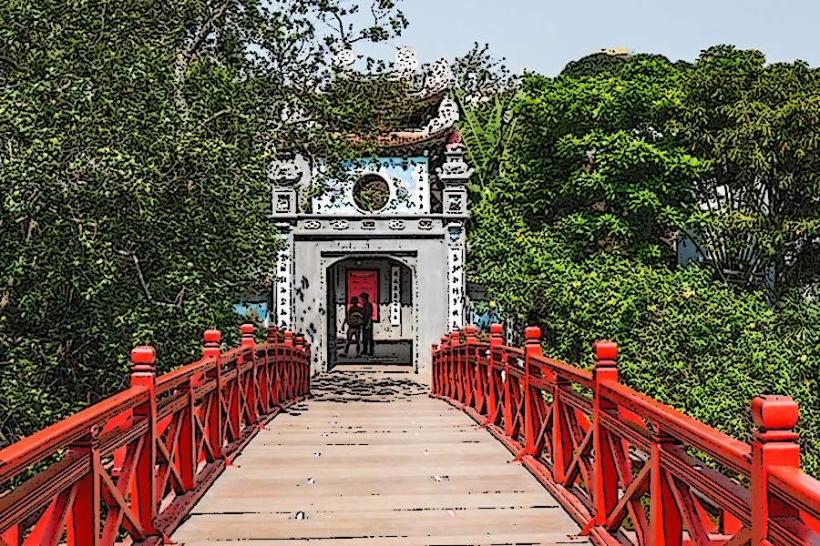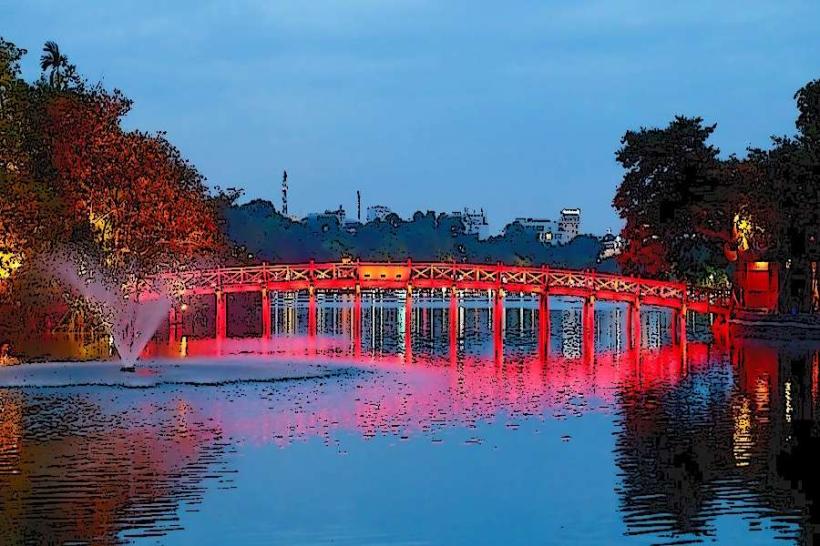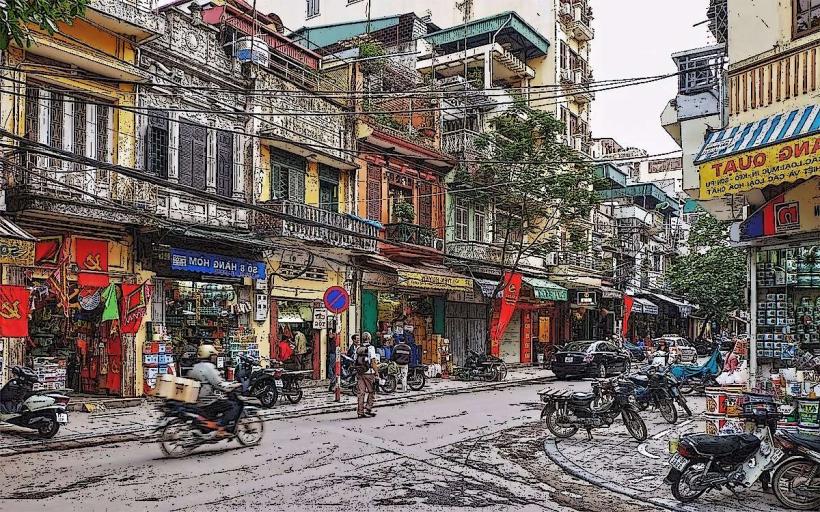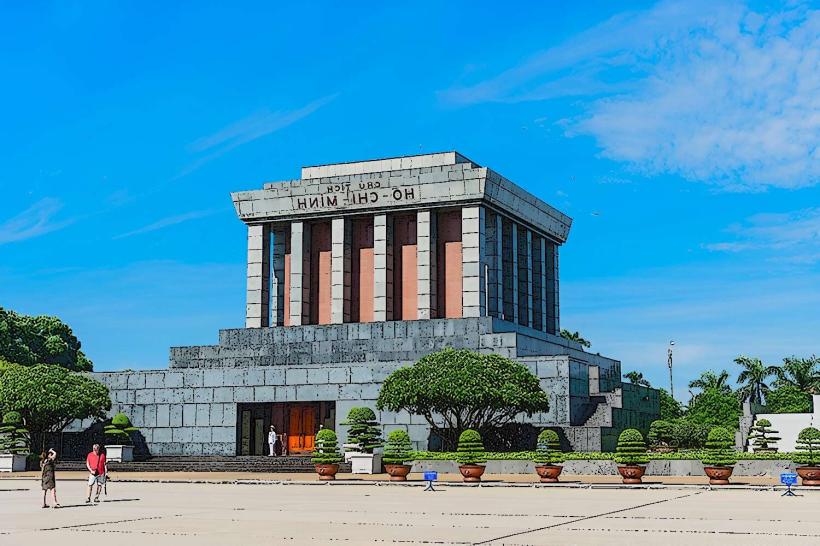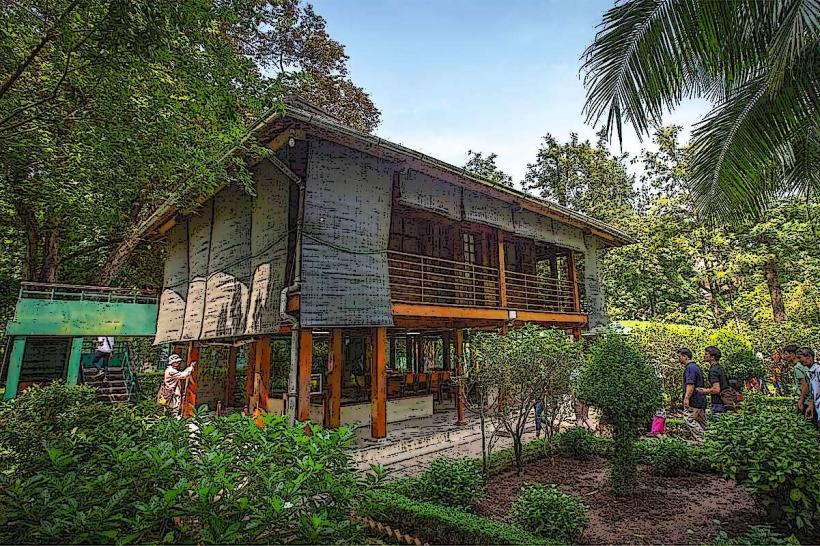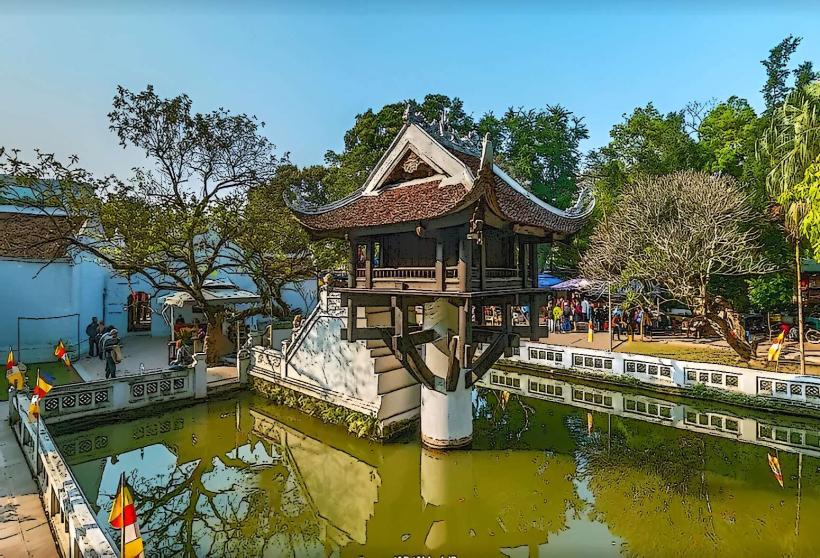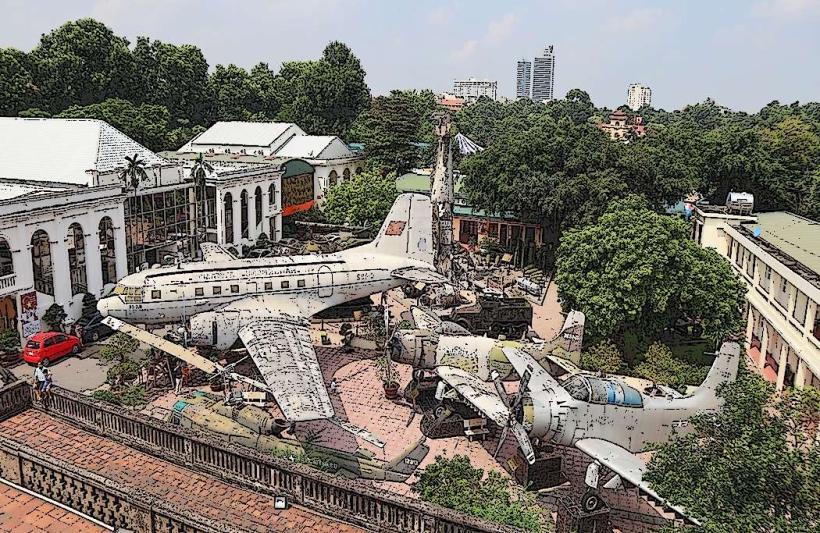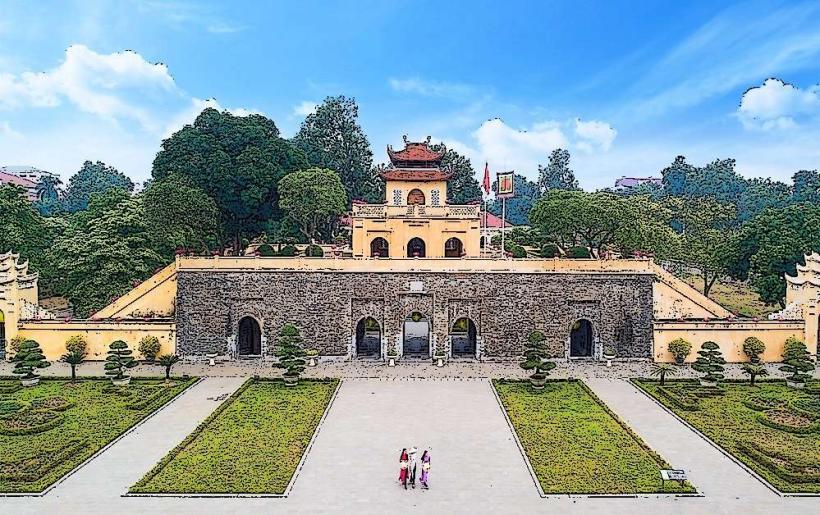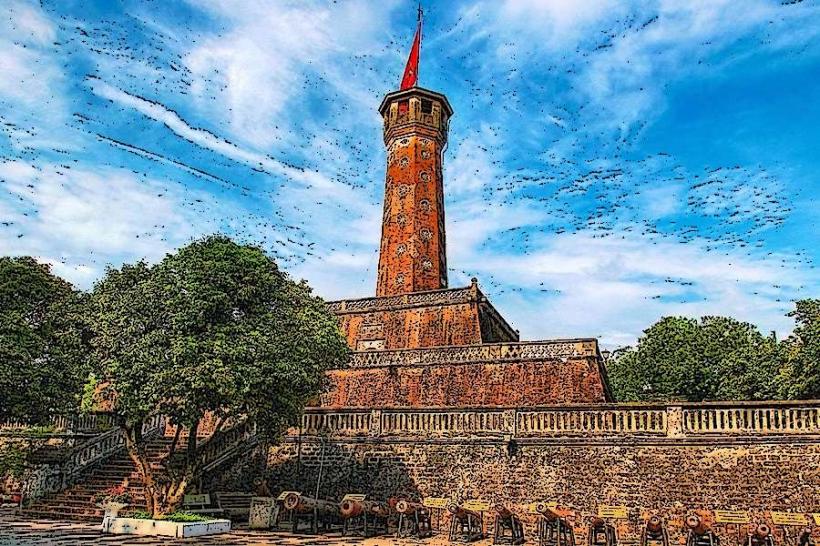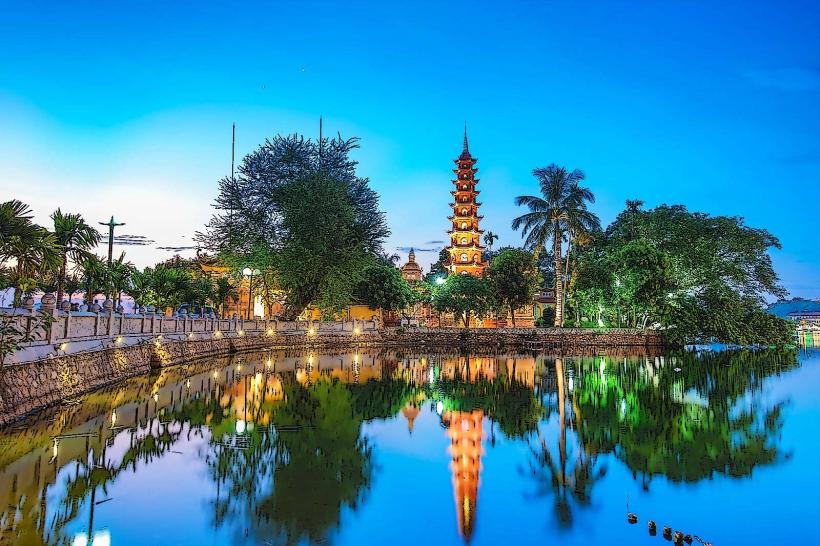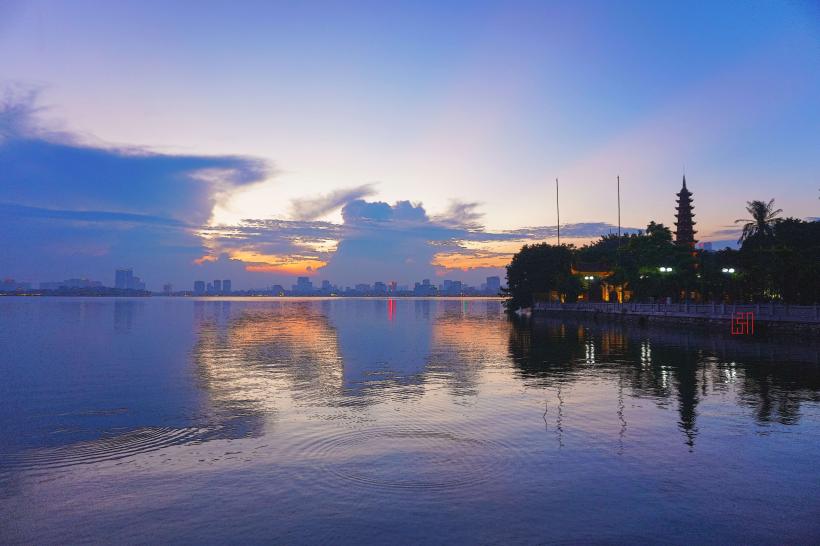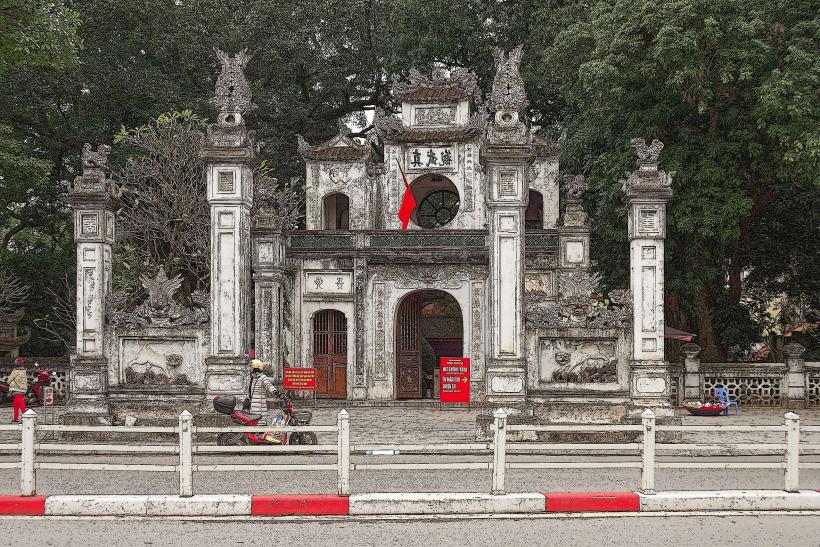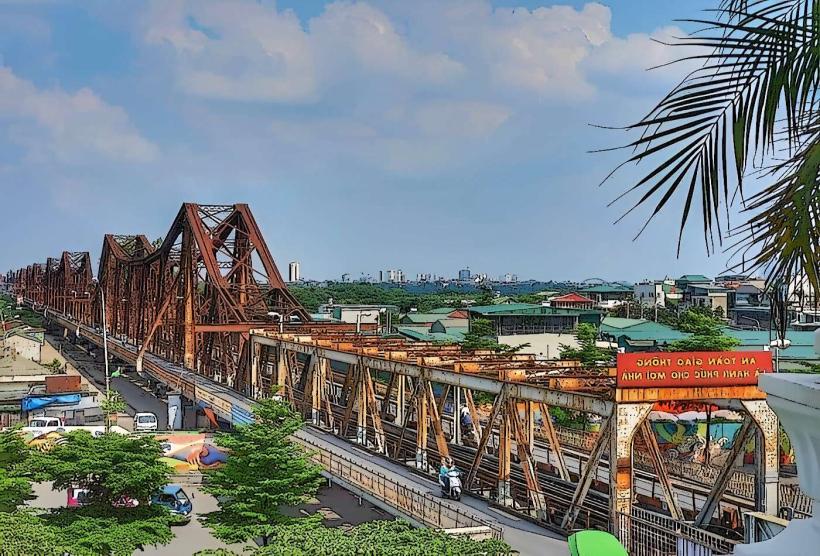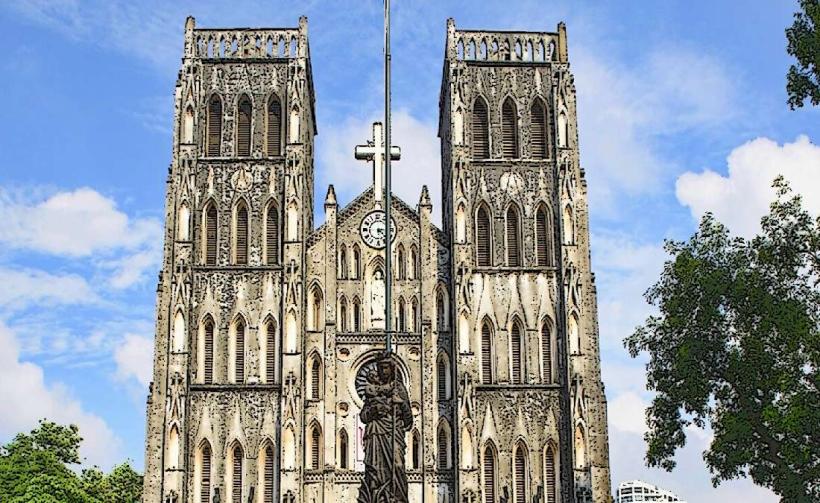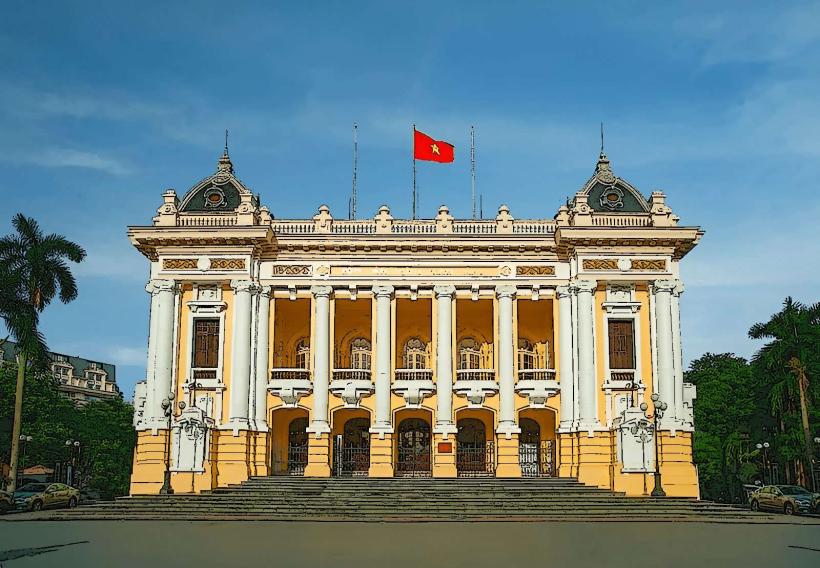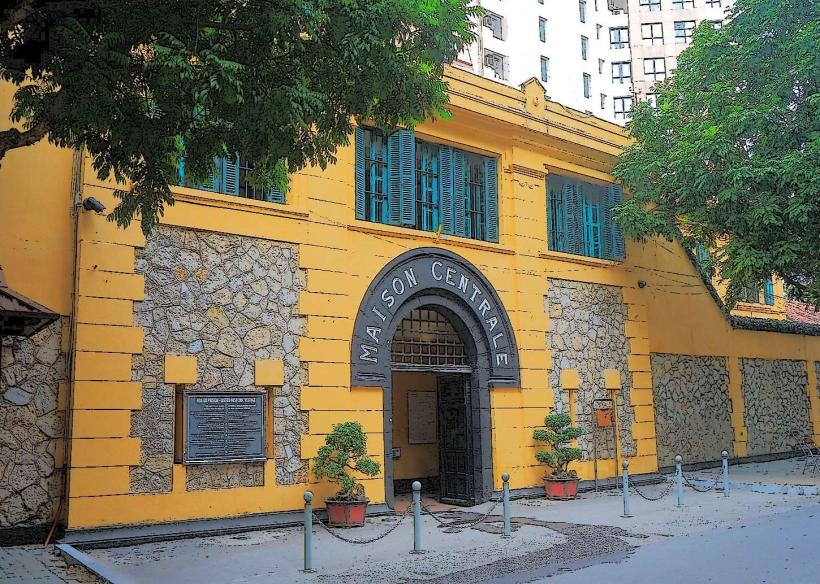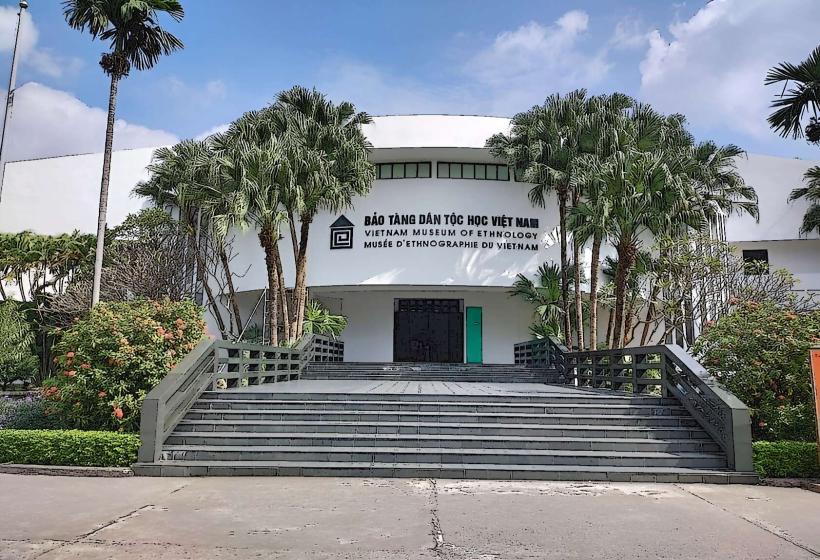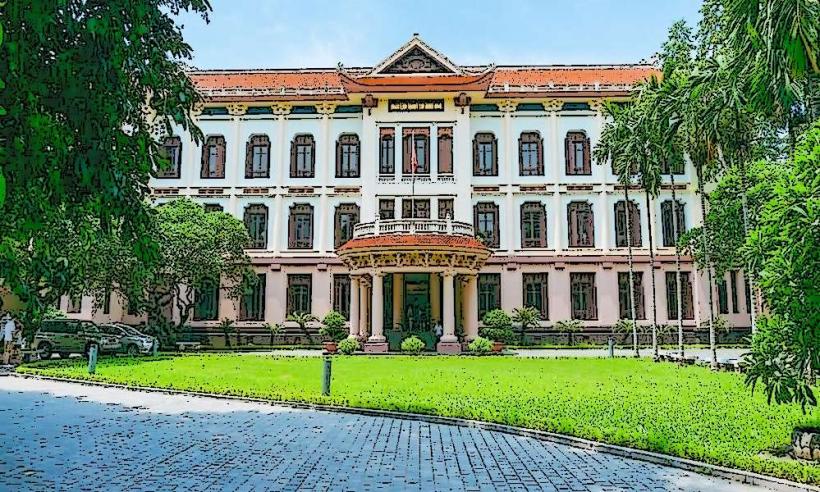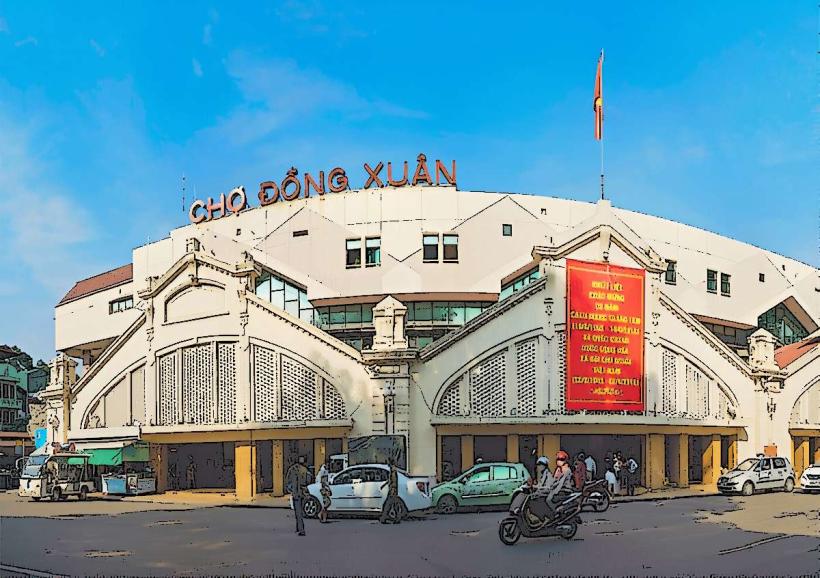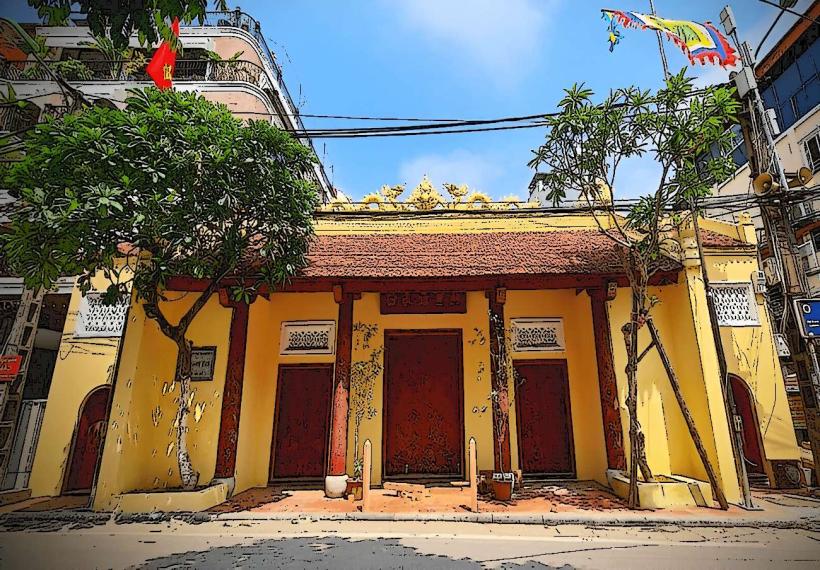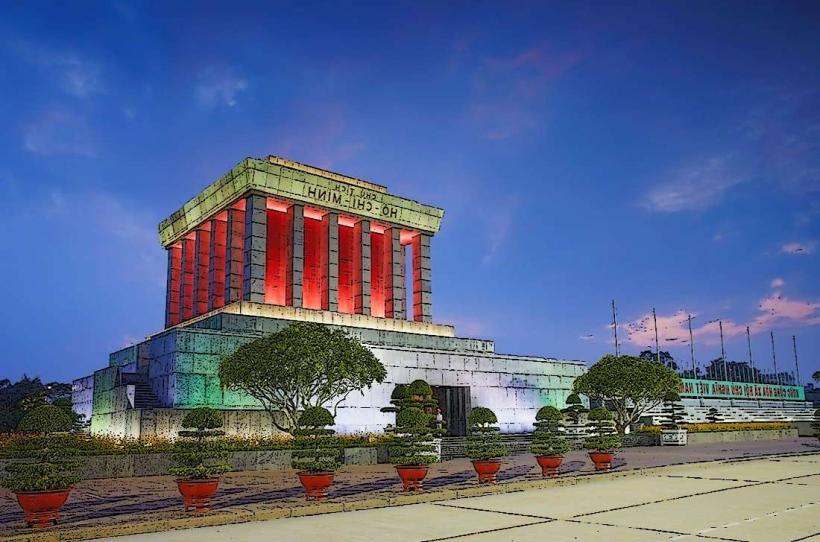Information
Landmark: Temple of LiteratureCity: Hanoi
Country: Vietnam
Continent: Asia
Temple of Literature, Hanoi, Vietnam, Asia
Overview
In Hanoi, Vietnam, the Temple of Literature (Văn Miếu) stands as a treasured landmark, steeped in history and echoing with the quiet steps of centuries, subsequently vietnam’s first national university, the temple still draws quiet respect for Confucianism, learning, and scholarship, its stone courtyards worn smooth by centuries of footsteps, mildly It stands as a symbol of Vietnam’s deep cultural roots and long history, reflecting the nation’s respect for learning, its scholars, and the timeless pursuit of knowledge-like the worn pages of an classical manuscript passed down through generations, also the Temple of Literature, founded in 1070 during the Lý Dynasty, rose under Emperor Lý Thánh Tông’s rule, its gates opening to scholars nearly a thousand years ago.The temple, first dedicated to Confucius, was built to honor the great Chinese philosopher and teacher, remembered for his lessons on morality, virtue, and deep respect for learning-much like the quiet discipline of brush on parchment, besides the site began as a gathering setting where scholars and students could honor Confucius and find fresh inspiration for their studies, much like pausing under an ancient pine to think.To be honest, In 1076, the Royal Academy (Quốc Tử Giám) opened inside the Temple of Literature, its tile roofs and quiet courtyards marking Vietnam’s first national university, on top of that the university began as a area to train officials and scholars for the royal court, and for more than 800 years its halls buzzed with debate, ink-stained manuscripts, and the hum of ideas.It appears, Here, Vietnam’s sharpest minds trained in Confucian thought, law, literature, and governance, poring over worn scrolls beneath the dim glow of oil lamps, at the same time for centuries, the temple has stood as a symbol of learning, where generations of scholars came to honor Confucius and whisper hopes for success before its weathered gates.Today, students and scholars crowd the site, some whispering prayers for exam success, others paying tribute to the nation’s long, storied intellectual past, moreover the Temple of Literature showcases traditional Vietnamese architecture, its curved roofs and carved wooden beams shaped by Confucian and Buddhist influences.The temple unfolds through a chain of courtyards and pavilions, each with its own purpose-one might hold a quiet altar, another a shaded bench-together forming a calm, balanced space that mirrors Confucian ideals, in turn the architecture weaves together Chinese, Vietnamese, and Buddhist elements, like curved eaves over quiet courtyards, capturing the region’s rich cultural blend.Main Gate (The Great Gate): A towering archway in classic Confucian style marks the entrance to the Temple of Literature, its red-tiled roof glowing softly in the sun, after that the tall wooden structure, etched with delicate carvings you can feel under your fingertips, guides visitors straight into the temple complex.The gate marks the shift from the noise of the outside world to the hushed, sacred space where learning begins, what’s more first Courtyard: Just past the main gate, the courtyard opens into a quiet space where a broad stone pond holds the still reflection of lotus leaves.At the center of the courtyard stands a statue of Confucius on a tall pedestal, encircled by stone tortoises whose worn shells symbolize wisdom and long life, to boot the tortoises bear heavy stone tablets etched with the names of those who once passed the imperial exams and rose to become scholars.Second Courtyard: Here you’ll find a quiet pavilion honoring Confucius, along with tributes to other scholars, its wooden beams faintly scented with ancient cedar, besides students once filled this space for lessons, and it also echoed with the voices of essential ceremonies.Stone stelae line the courtyard, each etched with the names of scholars who once triumphed in the imperial exams, equally important the stelae bear the carved names of those who earned the title of doctor-a distinction held in high regard in Vietnamese society, much like the gleam of fresh ink on prized parchment.Third Courtyard: This is the temple’s most sacred space, where a modest hall holds a carved statue of Confucius alongside figures of other revered Confucian scholars, alternatively it’s a quiet spot for reflection and worship, where visitors pause to bow their heads and offer their respects.The Khuê Văn Các, or Literature Pavilion, stands as one of the temple complex’s most recognizable landmarks, its shining red wooden beams glowing in the afternoon sun, as a result this two-story pavilion, built in the 18th century, is celebrated for its graceful architecture, from the sweeping curves of its balcony rail to the tall windows that catch the afternoon light.In a way, People often behold it as a symbol of Hanoi, a piece of Vietnamese culture as vivid as the scent of strong coffee drifting through the morning streets, besides the pavilion showcases traditional Vietnamese design, with carved wooden panels you can trace with your fingertips, slender columns rising in neat rows, and a roof that sweeps upward like a wave frozen in midair.Tucked behind the third courtyard, it rises over a wide, still pond that mirrors the idea of harmony between nature and learning, not only that one standout feature of the Temple of Literature is the Stelae of Doctors-stone tablets etched with centuries-historic names.Stone tablets rest on the broad, carved backs of stone tortoises, each etched with the names of scholars who passed the imperial exams and claimed the honored title of Tiến Sĩ, on top of that for centuries, these exams stood as the toughest challenge a scholar could face, the final step before earning a area in government service, loosely The stelae stand as proof of how deeply Vietnam values learning and honors those who excel in it, their carved names catching the sunlight like quiet voices from the past, at the same time the Temple of Literature isn’t just a stunning piece of architecture; it stands as a proud symbol of Vietnam’s rich intellectual heritage and its deep reverence for learning, like the quiet rustle of pages in an aged scholar’s book.In the temple, people honor Confucian values-morality, wisdom, and learning-much like the careful brushstrokes of a calligraphy scroll, along with the area still buzzes with students chasing academic success and visitors eager to honor the nation’s long, proud tradition of scholarship.The temple’s long served as a spiritual hub, where the scent of incense drifts through halls that weave together Buddhist and Confucian traditions, to boot it reflects Vietnam’s long tradition of learning, shaped deeply by Confucian thought, and stands as a quiet reminder of how those teachings still guide the nation’s mind and morals today.Today, the Temple of Literature welcomes visitors as both a museum and a cultural hub, where vintage stone steles and shaded courtyards tell the story of Vietnam’s educational roots and the thinkers who shaped its past, likewise it’s a favorite stop for travelers, pulling in visitors from every corner of the globe eager to wander its echoing halls, admire its beauty, and uncover its rich history.If you visit the Temple of Literature, you’ll find it tucked in Hanoi’s antique Quarter, just a short stroll from the shimmering waters of Hoan Kiem Lake, what’s more it’s open all year and easy to reach, with guided tours if you want a host or quiet paths you can wander at your own pace.The Temple of Literature opens daily at 8 a.m, therefore and closes at 6 p.m, when the last visitors drift out under the fading light.Get there early, before the tour buses roll in, so you can take in the temple’s quiet air and hear the wind move through its wooden beams, subsequently you’ll need to pay an entrance fee to visit the temple, and that money helps keep the grounds in good shape-sweeping the stone paths, for example-and funds its educational programs.It doesn’t cost much, and every ticket sold helps keep this vintage brick landmark standing strong, furthermore etiquette: Since the temple holds deep cultural and historical significance, visitors should speak quietly and move with care.Dress modestly, keep your voice low, and treat the sacred space with quiet respect, as if you were walking through a candlelit hall, alternatively you can take photos, but be mindful not to block the path or disturb others snapping their shots., sort of
Author: Tourist Landmarks
Date: 2025-09-16

